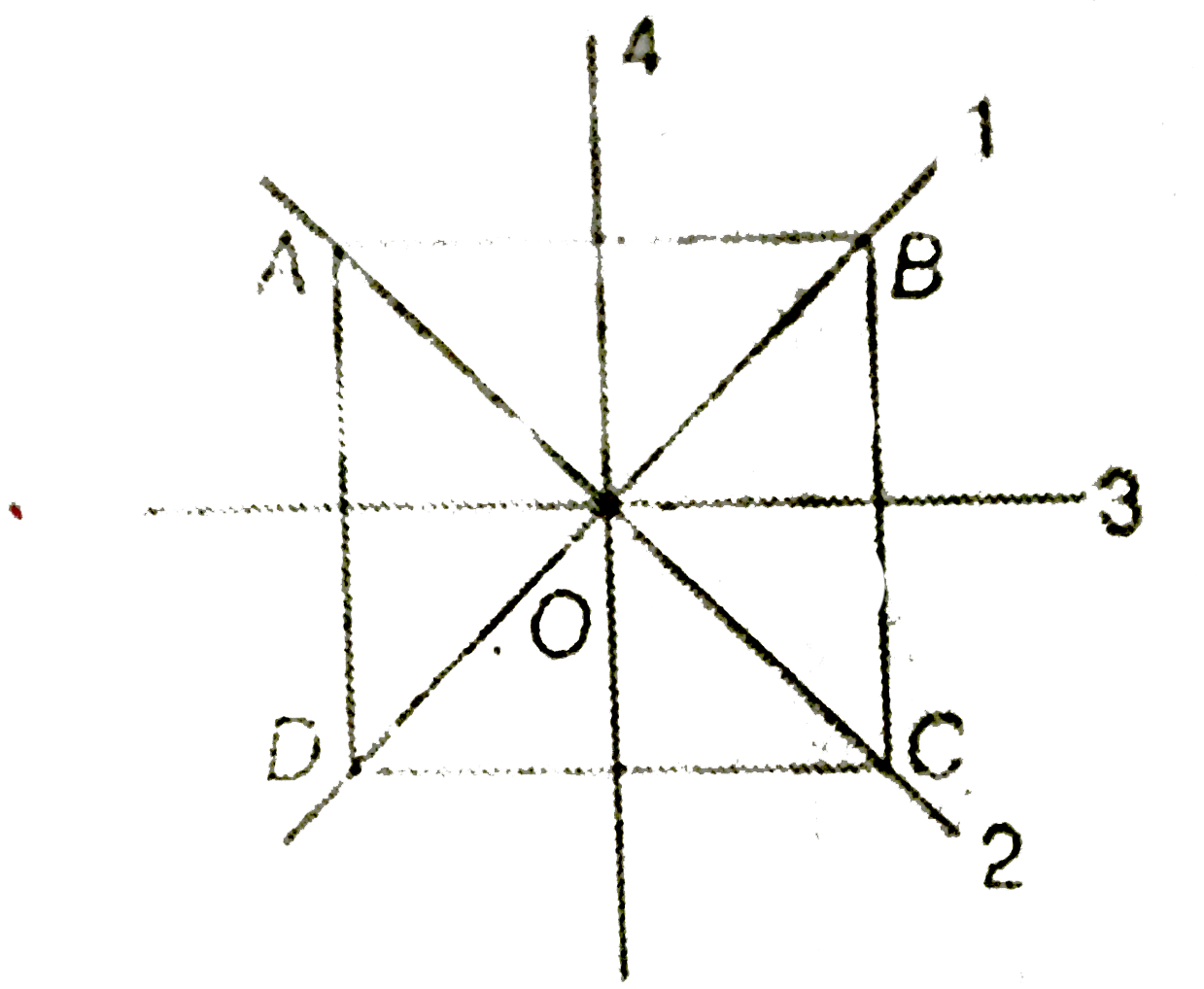The masses of two uniform discs are in the ratio 1:2 and their diameters in the ratio 2:1. The ratio of their moment, of inertia about the axis passing through their respective centres and perpendicular to their planes is
1:1
1:2
2:1
1:4
The correct Answer is:C
To find the ratio of the moments of inertia of two uniform discs about their respective centers and perpendicular to their planes, we can follow these steps:
Step 1: Understand the given ratios
We are given:
- The ratio of the masses of the two discs: m1:m2=1:2
- The ratio of the diameters of the two discs: d1:d2=2:1
Step 2: Relate diameters to radii
Since the radius is half of the diameter, we can find the ratio of the radii:
- r1:r2=d12:d22=2:1
Step 3: Write the formula for the moment of inertia
The moment of inertia I of a uniform disc about an axis through its center and perpendicular to its plane is given by the formula:
I=12mr2
where m is the mass and r is the radius of the disc.
Step 4: Calculate the moments of inertia for both discs
Using the formula for both discs:
- For disc 1:
I1=12m1r21
- For disc 2:
I2=12m2r22
Step 5: Substitute the mass and radius ratios into the moment of inertia formulas
Using the ratios:
- m1=m and m2=2m (from the mass ratio)
- r1=2r and r2=r (from the radius ratio)
Substituting these into the equations for I1 and I2:
I1=12m(2r)2=12m(4r2)=2mr2
I2=12(2m)(r)2=12(2m)(r2)=mr2
Step 6: Find the ratio of the moments of inertia
Now we can find the ratio I1I2:
I1I2=2mr2mr2=2
Final Result
Thus, the ratio of their moments of inertia is:
I1:I2=2:1
We are given:
- The ratio of the masses of the two discs: m1:m2=1:2
- The ratio of the diameters of the two discs: d1:d2=2:1
Since the radius is half of the diameter, we can find the ratio of the radii:
- r1:r2=d12:d22=2:1
The moment of inertia I of a uniform disc about an axis through its center and perpendicular to its plane is given by the formula:
I=12mr2
where m is the mass and r is the radius of the disc.
Using the formula for both discs:
- For disc 1:
I1=12m1r21
- For disc 2:
I2=12m2r22
Using the ratios:
- m1=m and m2=2m (from the mass ratio)
- r1=2r and r2=r (from the radius ratio)
I1=12m(2r)2=12m(4r2)=2mr2
I2=12(2m)(r)2=12(2m)(r2)=mr2
Now we can find the ratio I1I2:
I1I2=2mr2mr2=2
Thus, the ratio of their moments of inertia is:
I1:I2=2:1
Topper's Solved these Questions
- RIGID BODY DYNAMICS 1Book:CENGAGE PHYSICS ENGLISHChapter:RIGID BODY DYNAMICS 1Exercise:Multiple Correct
Explore 9 Videos
- RIGID BODY DYNAMICS 1Book:CENGAGE PHYSICS ENGLISHChapter:RIGID BODY DYNAMICS 1Exercise:Linked Comprehension
Explore 28 Videos
- RIGID BODY DYNAMICS 1Book:CENGAGE PHYSICS ENGLISHChapter:RIGID BODY DYNAMICS 1Exercise:Subjective
Explore 13 Videos
- PROPERTIES OF SOLIDS AND FLUIDSBook:CENGAGE PHYSICS ENGLISHChapter:PROPERTIES OF SOLIDS AND FLUIDSExercise:INTEGER_TYPE
Explore 2 Videos
- RIGID BODY DYNAMICS 2Book:CENGAGE PHYSICS ENGLISHChapter:RIGID BODY DYNAMICS 2Exercise:Interger
Explore 2 Videos
Similar Questions
The masses of two uniform discs are in the ratio 2:1 and their radii are in the ratio 1:2. The ratio of their moments of inertia about the axis passing through their respective centres normal to plane is
View SolutionOne circular ring and one circular disc, both are having the same mass and radius. The ratio of their moments of inertia about the axes passing through their centres and perpendicular to their planes, will be
View SolutionTwo discs have same mass and thickness. Their materials are of densities d1andd2. The ratio of their moments of inertia about an axis passing through the centre and perpendicular to the plane is
View SolutionThe moment of inertia of a copper disc, rotating about an axis passing through its centre and perpendicular to its plane
View SolutionMoment of inertia of a ring of mass M and radius R about an axis passing through the centre and perpendicular to the plane is
View SolutionFor the same total mass, which of the following will have the largest moment of inertia about an axis passing through the centre of mass and perpendicular to the plane of the body
View SolutionRadius of gyration of a uniform circular disc about an axis passing through its centre of gravity and perpendicular to its plane is
View SolutionThe moment of inertia of ring about an axis passing through its diameter is I. Then moment of inertia of that ring about an axis passing through its centre and perpendicular to its plane is
View SolutionThe moment of inertia of a thin square plate ABCD of uniform thickness about an axis passing through the centre O and perpendicular to plate is

View SolutionThe ratio of radii of gyration of a circular ring and a circular disc, of the same mass and radius about an axis passing through their centres and perpendicular to their planes are
View Solution
